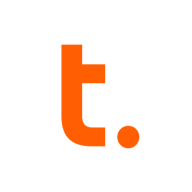

Teradata and Upsolver compete in data management and analytics. Teradata stands out in scalability and enterprise-grade solutions, whereas Upsolver is recognized for its flexible, cloud-based platform with innovative features.
Features: Teradata is known for robust data warehousing, scalability, and SQL compatibility. Upsolver’s strengths lie in real-time data processing, simplified data pipeline development, and flexibility with unstructured data.
Ease of Deployment and Customer Service: Teradata requires a comprehensive deployment process with significant resources and traditional enterprise support. Upsolver offers streamlined, cloud-native deployment with a focus on self-service and proactive customer support.
Pricing and ROI: Teradata involves significant initial setup costs but promises long-term ROI for large-scale enterprises. Upsolver provides a more accessible pricing model, emphasizing quick setup and immediate processing.


Teradata is a scalable data analytics platform designed to meet enterprise demands for large-scale data management and processing, focusing on performance, scalability, and security for complex query executions.
As a leading data warehousing solution, Teradata integrates advanced analytics enabling organizations to derive insights from massive datasets. It supports high-volume data workloads with its architecture optimized for analytical queries. Users benefit from its robust scalability, allowing seamless expansion as data grows. Teradata's SQL engine is compatible with a wide range of data types, ensuring flexibility in data analysis. With advanced security measures, it protects sensitive data across various environments, providing peace of mind to users handling critical information.
What are the most important features of Teradata?Teradata is widely used in industries like finance, telecommunications, and healthcare, where data-driven decisions are critical. Companies leverage its robust analytics capabilities to enhance customer experiences, streamline operations, and ensure compliance with regulatory requirements. In these sectors, quick access to data insights can significantly impact competitive advantage.
Upsolver's mission is to turn engineering-intensive data lakes into easy-to-use repositories that serve 50X more data professionals compared to the status-quo today. Upsolver cuts 95% from the tedious process of preparing event data for analytics and machine learning, using a visual SQL-based interface, a cloud-native data platform and deep technology for stream-processing, indexing and eventually-consistent file systems.
We monitor all Data Integration reviews to prevent fraudulent reviews and keep review quality high. We do not post reviews by company employees or direct competitors. We validate each review for authenticity via cross-reference with LinkedIn, and personal follow-up with the reviewer when necessary.